People
Typhoons Know No Borders: Interview with Haegue Yang, Part 2


Before the pandemic, Haegue Yang had a full roster of international exhibitions planned for 2020, with research and many new works underway. Most of these exhibitions still took place, though she herself was not able to install or visit them. Deputy editor HG Masters caught up with Yang to talk about the process of assembling these exhibitions. The first part of this conversation focused on Yang’s 2020 exhibition “O2 and H2O” at the National Museum of Modern and Contemporary Art, Seoul, and “Cone of Concern,” at the Museum of Contemporary Art and Design, Manila. In the second part, Yang reflects on her exhibition for Tate St. Ives, on the southwestern coast of England, as well as her Toronto survey, “Emergence,” at the Art Gallery of Ontario (AGO).
Your exhibition “Strange Attractors” at Tate St. Ives has a strong relationship to your MCAD show, particularly in its connection to weather and the sea, which are prominent features of life in both locations.
What the phrase “strange attractors” describes is this particular dynamic in the air. But “strange attractors” is not only used in meteorological physics but also many other fields because it’s part of chaos theory. The other layer is to interpret the idea of “strange attractors” with artistic figures. At Tate St. Ives, the trio of sculptures Sonic Intermediates – Three Differential Equations (2020), the centerpiece, is based on the lives of three artists: Barbara Hepworth [1903–1975], Naum Gabo [1890–1977], and Li Yuan-chia [1929–1994].
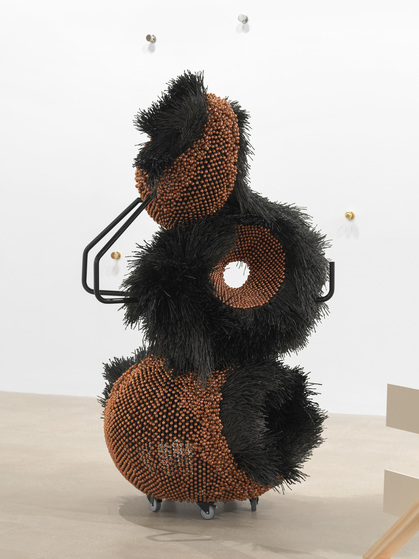

The shapes of the two dividing diagonal walls in the gallery are like the patterns I used in Manila, but here it related to Tate St. Ives’s modernist history. During the lifetime of Barbara Hepworth, St. Ives became the center of the modern art world, so whatever you do in St. Ives, it is viewed through the filter of modernism.
Before you enter the show, you see a mini presentation of works by the three artists. We included quite a lot of Li’s works: self-portraits, calligraphy, paintings, carpets, and the most famous is the interaction Magnetic Points. I wanted viewers to already be showered with the history when they enter the main gallery. Here the main motif of the wallpaper is water—waves, storms, the dangerous version of water. In old times in St. Ives, there was such a struggle with the water. Alongside the beautiful but rough coast are many chapels. I was very touched by the pew cushions in St. Senara’s Church in Zennor [near St. Ives]. Though a majority of them were simple—with a cross or religious motif—on some of them, like this one called Eclipse, on the back of the cushion there is the owner’s name and motif, and this is a one-to-one replica of what I found. I called the series Mundus Cushion – Yielding X (2020), because it was very cosmic. Some of the others were so lovely and sweet, like the cushions [the parishioners] made with their dog on it after it had died. My first thought about the cushions, in this grand, powerful church, is their modesty and the groundedness that must come from living so close to the rough sea. The sea makes human beings very humble. You have such awe for the beauty of the sky and how the ocean and sky meet in St. Ives. You can walk hours and hours in the fog. Even when you’re on land, it feels like you’re in the water.
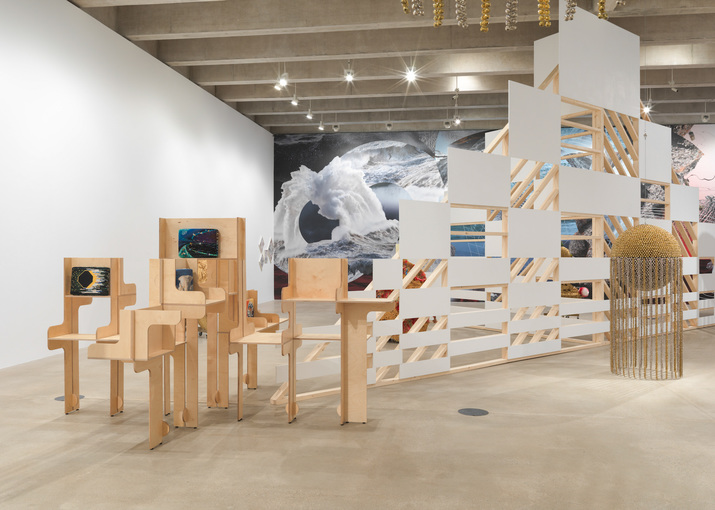
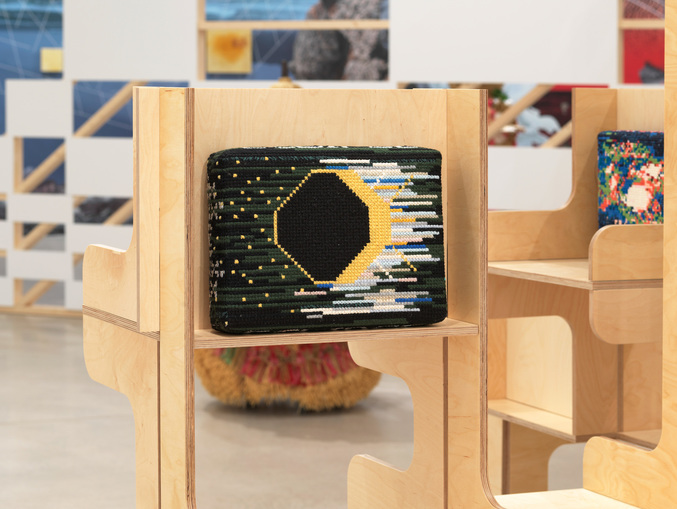
Tate St. Ives looks out onto the water. How did you use that in the exhibition?
Gallery 8 is a circular space facing the beach, so you see the ocean, the prehistoric, elements of the rocks, the cliff. For me this was the perfect constellation. I hung two fabrics in front of the windows, and each had different vertical and horizontal lines of weaving. So depending on the angle, you see different colors. Altogether they are greenish-bluish but there is orange and red in them that stands between the gallery and ocean outside. It gives the feeling of being in a boat.
Why were you drawn to these three artists?
During the war Gabo was a refugee artist. The Tate St. Ives has quite a collection of Gabo’s work. He and Hepworth were very close but they were rivals too. There were disputes about who did what first, that kind of thing. Li and the other two had never actually met each other but Li, for me, was a kind of immigrant artist. There were real and fictional conversations between the three. It was a filter I wanted to look through to understand and access the British modern and contemporary art scene.
Li is very unique. He is Asian but also special for the way he engaged in local communities, not in Cornwell, but in Cumbria, in the north. Li was such a well-traveled person, from mainland China, to Taiwan, Italy, and was also involved in the Signal group in London and eventually went to the north of England where he worked and died. Anne [Barlow, the director of Tate St. Ives] and I went to the north and met all the people who knew Li from his lifetime. We could really verify his engagement in very rural and poor communities far from the contemporary art scene. He was maybe the most remote figure but he was very engaged in the local community. His LYC Museum took care of kids in the neighborhood through its printing workshops.
Li portrayed himself many times with cloth over his head and with a broom in his hand. There are almost 100 of the hand-colored, black-and-white photographs of himself styled like that. This sculpture with the broom [Sonic Intermediate – Parameters and Unknowns after Li, 2020] was made after his self-portraits. And [Sonic Intermediate – Parameters and Unknowns after Hepworth] is based on Hepworth’s work Pelagos (1946)—it’s a triple stack of Pelagos. I see these three as building “strange attractors” around art history.

There are a lot of common interests between “O2 and H2O” and “Cone of Concern,” one of them being elemental materials and forces. How does “Strange Attractors” fit with the other shows?
I’m interested in “déjà vu” elements between the exhibitions. I imagined that some people might see more than one of the exhibitions and ask, “Why is this here?” That’s how I built “Strange Attractors” in St. Ives. If you look at Google images for “strange attractors” you will see all that in these fractal movements, there is no regularity, no tangible predictability. But there are patterns in these tendencies that look chaotic—or that we cannot predict reasonably or logically calculate, which is what scientists call “chaos.” But even with the chaos one can see patterns revolving around those figures or three points. Yet you need multiple parameters to cause this chaotic pattern, what we call the “strange attractor.” It looks completely random now, but in one minute, when you see a lot of data, a kind of pattern emerges. That’s the “strange attractors.” And I just found the wording so interesting—“attractors.”
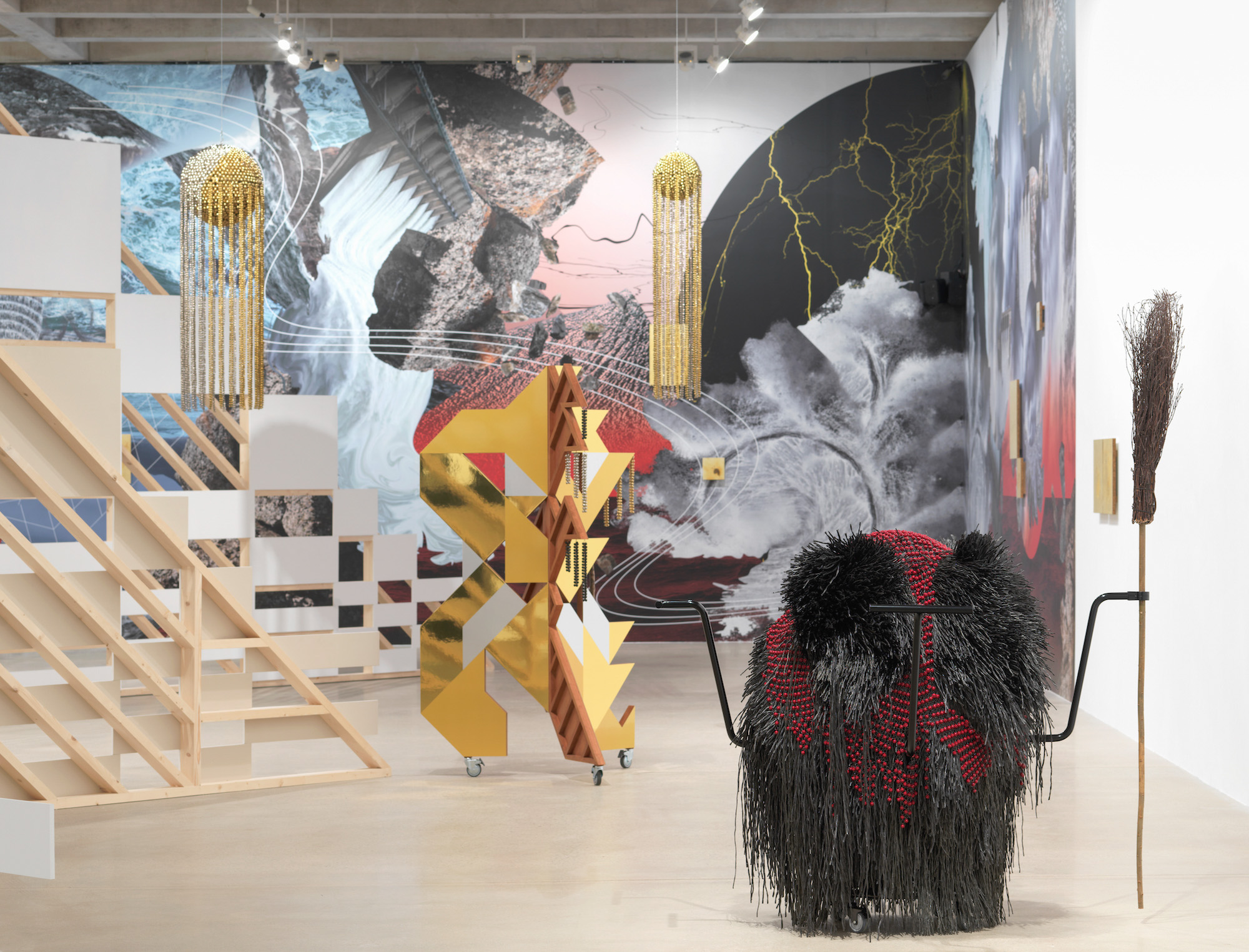
At Tate St. Ives your process of creating an exhibition grew out of your engagement with the collection; you did a similar thing at the AGO. What led you to be interested in the collection?
Yes, while it was interesting to look into their painting collection at the modernist history of Tate St. Ives, I deleted all the painters and picked only certain figures, like Hepworth. So it’s a very subjective reading. I did the similar thing with the Art Gallery of Ontario collection and the Canadian modern painters. My reading was primarily of historical artifacts from Inuit and First Nations, in contrast to the landscapes by painters of European descent. These two categories are the backbone of the AGO collection. I studied the Group of Seven, who portrayed the landscape of Canada with the sense that it was their landscape. At the same time [their style] was very far from the way First Nations saw nature. For the Inuits even stones are so sacred that museums can’t put them under glass because the stone would not be able to breathe! There are so many different approaches to the material and the notion of art, the environment, people and the land. I’m an outsider. It might read as superficial but it was fun messing up the historical or colonial reading.
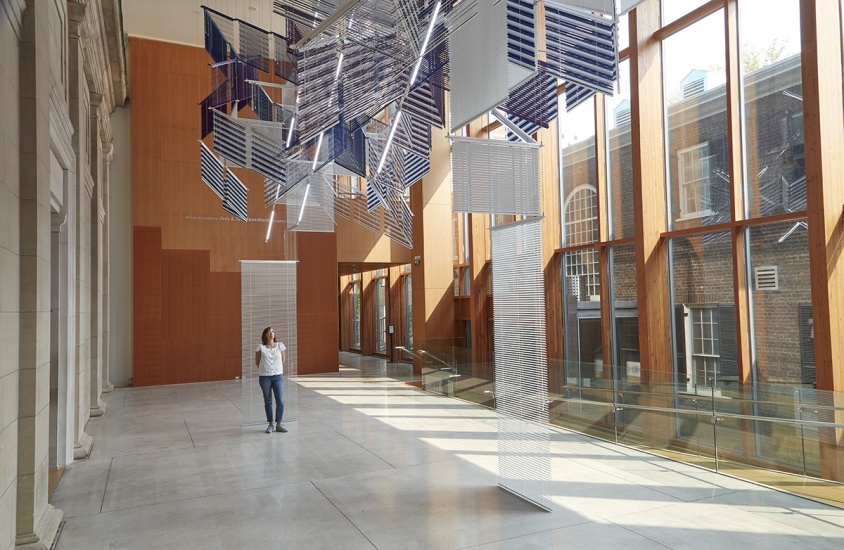
How did you manifest this “messing up of history” in terms of what you presented at the AGO?
“Emergence” was more or less a survey show. There were over 90 pieces altogether. Of the two new works, one is a wallpaper [Tectonic Undulations – A Fugue for the Great Wilderness, 2020] in the south entrance and other is the venetian blind piece [Woven Currents – Confluence of Parallels], which came out of my reading of the collection, and relates to the patterns [of the beads] of the Two Row Wampum Treaty [from 1613]. The site that I chose for the blind is where the different buildings that make up the museum actually meet, quoting the different histories and activities of the museum.
Another way to access the exhibition is through the title: “Emergence.” It’s similar to “Strange Attractors.” You can see the word as scientific vocabulary, as a word from neuroscience. It also gives a different interpretation of how the survey can be seen. It’s just one particular reading but one particular characteristic that can emerge that was not observed in the self-unit. For instance, if you look at the cells, the blood, or the muscles you don’t really see the property of “Haegue Yang.” When does the character “Haegue Yang” emerge? You go into each element: the blood, the cells, the tissue. Physically, scientifically, there is no doubt the self consists of these cells. But in the survey we want to see the moment of emergence. I wanted to get rid of all these mechanisms of recognition, and just focus on what emergence can be described by the show. It’s an exciting concept.
his interview has been edited for clarity and length.
HG Masters is the deputy publisher and deputy editor of ArtAsiaPacific.
“Strange Attractors” is on view at Tate St. Ives until September 26, 2021.
“Emergence” is on view at the Art Gallery of Ontario, Toronto, until April 5, 2021.







